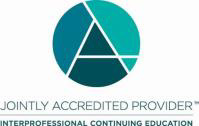WMJ Vol 120 Supplement 1: Evaluation of Racial Disparities in Postoperative Outcomes Following Breast Reconstruction at a Single Institution in Wisconsin
ABSTRACT
Introduction: Breast cancer is the most common cancer in women in Wisconsin. Evidence demonstrates that non-White racial minorities in the United States exhibit a higher mortality rate and more advanced or aggressive presentations of the disease than their White counterparts. Postmastectomy breast reconstruction remains essential to the treatment and recovery of these patients; however, racial disparities in the receipt of reconstruction are evident. This study evaluates the presence of racial disparities in postoperative outcomes of breast reconstruction at a single institution in Wisconsin.
Methods: An institutional review board-exempt retrospective study of postoperative outcomes was performed using a single institution’s National Surgical Quality Improvement Program Registry to identify patients who underwent autologous or prosthesis-based breast reconstruction following mastectomy. Patient demographic, preoperative, operative, and postoperative variables were recorded. Postoperative outcomes in relation to self-reported race were evaluated using univariate analysis and propensity score matching.
Results: A total of 1,140 patients were included (1,092 White vs 48 non-White), with fewer non-White patients undergoing reconstruction. Patients of non-White race demonstrated a higher incidence of morbid obesity (4.4% White vs 12.5% non-White, P = 0.010) and bleeding disorders (0.3% White vs 4.2% non-White, P < 0.001). No association between self-reported race and postoperative complication was found.
Conclusion: This study did not reveal racial disparities in postoperative outcomes of breast reconstruction at a single institution in Wisconsin; however, non-White patients were less likely to undergo reconstruction. Further research into the underlying causes of unequal access to care, influence of insurance, effect of structural racism, and impact of physician- and patient-associated factors is warranted.
Intended Audience
The target audience for this journal-based activity is healthcare providers caring for the people and communities of Wisconsin and beyond.
Learning Objectives
As a result of this journal-based activity, learners will be able to:
- Identify barriers to breast reconstruction.
- Examine the potential for racial disparities in postoperative outcomes within the healthcare team.
- Outline the factors that perpetuate racial disparities surrounding breast reconstruction.
FACULTY DISCLOSURE
It is the policy of the University of Wisconsin–Madison Interprofessional Continuing Education Partnership (ICEP) to identify, mitigate and disclose all relevant financial relationships with ineligible companies* held by the speakers/presenters, authors, planners, and other persons who may influence content of this accredited continuing education (CE). In addition, speakers, presenters and authors must disclose any planned discussion of unlabeled/unapproved uses of drugs or devices during their presentation.
For this accredited continuing education activity all relevant financial relationships have been mitigated and detailed disclosures are listed below.
| Name of Individual | Individual's Role in Activity | Name of Commercial Interest & | Discussion of |
| Terese Bailey, BS | Accreditation Specialist | No relevant relationships with ineligible companies to disclose | No |
| Aaron M. Dingle, PhD | Author | No relevant relationships with ineligible companies to disclose | No |
| Jesse M. Ehrenfeld, MD, MPH | Reviewer | No relevant relationships with ineligible companies to disclose | No |
| Kirsten A. Gunderson, BS | Author | No relevant relationships with ineligible companies to disclose | No |
| Alison M. (Mueller) Karczewski, BS | Author | No relevant relationships with ineligible companies to disclose | No |
| Sarah M. Lyon, MD | Author | No relevant relationships with ineligible companies to disclose | No |
| Zeeda H. Nkana, BS | Author | An injectable electrode, Injectrode, to aid bone growth and regeneration (Patent) | No |
| Roberta Pawlak, PhD, RN, NEA-BC | Reviewer | No relevant relationships with ineligible companies to disclose | No |
| Samuel O. Poore, MD, PhD | Author | No relevant relationships with ineligible companies to disclose | No |
| Sarina Schrager, MD, MS | Editor | No relevant relationships with ineligible companies to disclose | No |
| Malika Siker, MD | Reviewer | No relevant relationships with ineligible companies to disclose | No |
| Kasey Leigh Wood, BS | Author | No relevant relationships with ineligible companies to disclose | No |
*Ineligible companies are those whose primary business is producing, marketing, selling, re-selling, or distributing healthcare products used by or on, patients.
The ACCME does not consider providers of clinical services directly to patients to be commercial interests.
Accreditation
Accreditation Statement
 | In support of improving patient care, this activity has been planned and implemented by the University of Wisconsin–Madison ICEP and the Wisconsin Medical Journal. The University of Wisconsin–Madison ICEP is jointly accredited by the Accreditation Council for Continuing Medical Education (ACCME), the Accreditation Council for Pharmacy Education (ACPE), and the American Nurses Credentialing Center (ANCC), to provide continuing education for the healthcare team. |
Credit Designation Statements
American Medical Association (AMA)
The University of Wisconsin–Madison ICEP designates this journal-based CE activity for a maximum of 1.0 AMA PRA Category 1 Credit™. Physicians should claim only the credit commensurate with the extent of their participation in the activity.
American Nurses Credentialing Center (ANCC)
The University of Wisconsin–Madison ICEP designates this journal-based CE activity for a maximum of 1.0 ANCC contact hour.
Iowa Board of Nursing accepts ANCC contact hours for nursing continuing education requirements.
Continuing Education Units
The University of Wisconsin–Madison ICEP, as a member of the University Professional & Continuing Education Association (UPCEA), authorizes this program for 0.1 continuing education units (CEUs) or 1 hour.
Available Credit
- 1.00 AMA PRA Category 1 Credit™
- 1.00 ANCC Contact Hours
- 1.00 University of Wisconsin–Madison Continuing Education Hours
- 1.00 Approved for AMA PRA Category 1 Credit™
Required Hardware/software
Free, current version of Chrome, Firefox, Safari, or Edge. Some older browsers and Microsoft Internet Explorer could produce error messages or not display the content correctly.
Free, current version of Adobe Acrobat Reader or other .pdf reader.

 Facebook
Facebook X
X LinkedIn
LinkedIn Forward
Forward